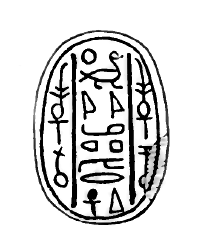| Meruserre Yaqub-Har | |
|---|---|
| Yakubher, Yakubhar, Yak-Baal | |
 Drawing of a scarab of Yaqub-Har by Flinders Petrie | |
| Pharaoh | |
| Reign | 17th or 16th century BCE |
| Dynasty | 14th dynasty or 15th dynasty, possibly a vassal of the Hyksos king, highly uncertain |
Meruserre Yaqub-Har (other spelling: Yakubher, also known as Yak-Baal [1] ) was a pharaoh of Egypt during the 17th or 16th century BCE. As he reigned during Egypt's fragmented Second Intermediate Period, it is difficult to date his reign precisely, and even the dynasty to which he belonged is uncertain.

